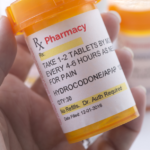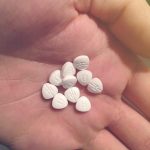How Long Does Hydrocodone Stay In Your System?

Hydrocodone is a powerful prescription opioid pain medication that is used to treat moderate to severe pain. It is a semi-synthetic opioid that is derived from codeine, which is a natural opioid found in opium poppy plants.
Hydrocodone works by attaching to specific proteins called opioid receptors in the brain and spinal cord. These receptors are involved in transmitting pain signals throughout the body. By attaching to these receptors, hydrocodone can block the transmission of pain signals, which can result in a reduction in pain and feelings of euphoria and relaxation.
Hydrocodone is often combined with acetaminophen (the active ingredient in Tylenol) or other pain-relieving medications to increase its effectiveness. When taken as prescribed, hydrocodone can be a safe and effective way to manage pain. However, because it is an opioid, it can also be highly addictive and has the potential for abuse and dependence. It is important to use hydrocodone only as directed by a healthcare provider and to be aware of the risks associated with its use.
How Hydrocodone Is Metabolized In The Body
The metabolism of hydrocodone produces several metabolites, including hydromorphone and norhydrocodone, which are also pharmacologically active. Hydrocodone is primarily metabolized by the liver enzyme CYP2D6, which converts it into its active metabolite, hydromorphone. Hydromorphone is a potent opioid agonist and is responsible for much of the analgesic effects of hydrocodone. Norhydrocodone, another metabolite of hydrocodone, is also pharmacologically active, although to a lesser extent than hydromorphone.
After hydrocodone is metabolized, the resulting metabolites are eliminated from the body through the kidneys and in the feces. The half-life of hydrocodone is about 3-4 hours, while the half-life of its active metabolite, hydromorphone, is about 2-3 hours.
It’s worth noting that hydrocodone metabolism can be affected by several factors, including liver function, genetics, and other medications that can inhibit or induce CYP2D6. This can lead to individual differences in the metabolism of hydrocodone and the resulting effectiveness and side effects of the drug.
How Long Does Hydrocodone Stay In Your System?
The length of time that hydrocodone stays in your system can vary depending on several factors, including your metabolism, how much and how often you have taken the drug, and the type of drug test being used. Here’s a breakdown of how long hydrocodone can be detected in different parts of the body:
1. Blood: Hydrocodone can be detected in the blood for up to 24 hours after the last dose.
2. Saliva: Hydrocodone can be detected in saliva for up to 48 hours after the last dose.
3. Urine: Hydrocodone can be detected in urine for up to three days after the last dose. However, in chronic or heavy users, hydrocodone can be detected in urine for up to four days or longer.
4. Hair: Hydrocodone can be detected in hair for up to 90 days after the last dose. Hair testing is not commonly used but may be used in certain situations, such as workplace drug testing.
It’s important to note that these are just general estimates and can vary based on individual factors. In some cases, hydrocodone may be detectable for longer periods of time, especially in people who use the drug frequently or in high doses.
Additionally, hydrocodone can interact with other medications and substances, which can affect how long it stays in your system. For example, drugs that affect liver function or metabolism can increase the amount of time it takes for your body to eliminate hydrocodone.
If you’re taking hydrocodone, it’s important to talk to your doctor about how long it will stay in your system and any potential interactions with other medications or substances. It’s also important to follow your doctor’s instructions carefully and never take more than the prescribed dose of hydrocodone.
How To Get Hydrocodone Out Of Your System Faster
The safest and most effective way to detox from Hydrocodone is under the guidance of a healthcare professional, such as a doctor or addiction specialist. They can help you develop a personalized treatment plan that addresses your unique needs and provides the support you need to manage withdrawal symptoms.
Detoxing from Hydrocodone involves removing the drug from the body while managing withdrawal symptoms that may occur. Here are the steps to detox from Hydrocodone in detail:
1. Consult with a healthcare provider: Detoxing from Hydrocodone can be dangerous if not done correctly. A healthcare provider can determine the appropriate method of detox and provide medical supervision during the process. They can also prescribe medication to help manage withdrawal symptoms.
2. Tapering: Tapering is the process of gradually reducing the dose of Hydrocodone over time. This can help minimize withdrawal symptoms and reduce the risk of relapse. The healthcare provider will determine the appropriate tapering schedule based on the individual’s level of dependence and other factors.
3. Medication-assisted treatment: Medication-assisted treatment (MAT) involves using medication to manage withdrawal symptoms and cravings. The most commonly used medications for Hydrocodone detox include methadone, buprenorphine, and naltrexone. MAT should only be done under the supervision of a healthcare provider.
4. Supportive care: Supportive care can help manage the physical and psychological symptoms of Hydrocodone withdrawal. This can include things like rest, hydration, and nutrition. A healthcare provider may also recommend therapy or counseling to address any underlying issues that may have contributed to the addiction.
5. Follow-up care: Detoxing from Hydrocodone is just the first step in recovery. Follow-up care, such as ongoing therapy or support group attendance, can help prevent relapse and promote long-term recovery.
In conclusion, detoxing from Hydrocodone involves removing the drug from the body while managing withdrawal symptoms. It’s important to work with a healthcare provider to determine the appropriate method of detox and receive medical supervision during the process. Detox is just the first step in recovery, and ongoing support is crucial for long-term success.





